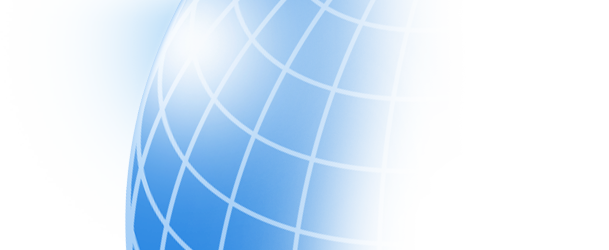People - GLOBE Observer
Dr. Patrick Taylor
Where are you from?
Liverpool, PA. Named after Liverpool, England, (where the Beatles
are from). Before graduate
school, I went to California University of Pennsylvania. It is
a smallish school of about 6,000 students south of Pittsburgh in
western Pennsylvania.
What do you do?
I work at NASA Langley on the CERES science team. CERES stands
for Clouds and Earth’s Radiant Energy Systems. The instrument takes
observations from space of the amount of energy that is coming out of
the top of the atmosphere.
I study the role of clouds in the Earth’s energy budget and the role of clouds going forward in terms of how they impact the Earth's climate. We call that "cloud feedback." Using CERES data, I compare it with climate models to try and understand when they are good, and when they are bad, and how we can make them better.
What missions are you involved in and how do they relate to
GLOBE Observer?
CERES and CLARREO, which is under development and will hopefully
fly in 2022, or so and go to the International Space Station.
I’ve also been funded to study clouds in the Arctic and how they interact with sea ice. The instruments that are good for that are CALIPSO and CloudSat.
When people take GLOBE Observer surface observations we can compare those with satellite observations to see if they agree with each other. We need more ground based observations to help us do a better job because in space we are observing with remote sensing and we have to interpret what we are seeing. We develop algorithms to do that and some work better than others.
In the context of CloudSat and CALIPSO, the lidar beams are very narrow, so you don’t see a large spatial area, but you do get very detailed vertical structure information. So, you know if you are looking at high clouds or low clouds. The surface observations can help complete the picture that we get from the space-borne radar and lidar.
A ship that is doing cruises in the Arctic and Antarctic is also making cloud observations at the same time they are making sea ice observations. GLOBE Observer can really help us tie up the loose ends when the satellite cannot give us the complete picture, so the view from the bottom really does help.
What was your career path?
My career path
started in the 4th grade. We did a month-long lesson on the weather. I
was volunteered by my teacher to be the 'chief data logger." In
the classroom, I would write down the temperature, dew point and wind
every day on the chalk board. From that lesson, I decided I wanted to
be a meteorologist. I’d watch the morning meteorologist on TV and try
and make predictions.
This experience also influenced me to attend the California University of Pennsylvania to become a meteorologist.
But after I had been there for two years, I had the opportunity to go to the American Meteorological Society (AMS) meeting. Before that, I thought that the only way to be a meteorologist was to be on TV. At that meeting, I found out that there is more to the field than what you see on TV. There was private industry, there were people making forecasts for the stock market futures and then I saw all this other research that drew me in. I changed my major when I came back from that meeting. I had recently declared my major as broadcast meteorology, where I had courses in broadcasting and how to produce a TV show. The other meteorology major was operational meteorology where there were more classes in physics and calculus for research. Changing my major allowed me to take more research classes and eventually go to graduate school.
I went to graduate school for meteorology at Florida State University (FSU). I was there for five years and I obtained my Masters and Ph.D. there. I studied cloud feedbacks at FSU. We wanted to know what’s the role of clouds in how much the globe is going to warm as a result of increasing CO2. We did a lot of calculations for that and the work aligned really well with research going on at NASA Langley, especially with the CERES science team. As I was finishing up my Ph.D., I went to a meeting, the Gordon Research Conference. In the afternoons, they had some time where younger scientists and senior scientists could interact at a more personal level doing different activities. So, every afternoon of that meeting I played basketball. During one of those basketball games I met Norman Loeb, the CERES PI. Who told me to check out a job that was opening up at NASA Langley. This was in July in 2009. I finished my Ph.D. in October of 2009 and was sitting at my desk at NASA Langley in November 2009.
Why is citizen science important to you?
I think citizen science is important because it gets people
engaged in the world they live in and actually thinking about the
things that are happening around them. It’s easy to get buried in our
cell phones, our iPads, or the television, and our own life. You
forget that there is a whole other world that is happening around you.
Citizen science helps people expand their focus beyond their own lives
and think about their world more holistically.
What advice do you have for people just getting into citizen
science?
Read a lot. That will help you put your ideas into focus.
Find a group of other citizen scientists. Start a group or join a group. Not only will that help you, but it will help you learn more. Scientists go to meetings because no one scientist has all the answers and sharing ideas is important to really allow us to move the field of knowledge forward. Interacting and talking to other people allows you to learn more and you can move your knowledge forward.
What do you do for fun?
Basketball, golf, playing with my little girls, homebrewing, and
judging homebrew competitions
Who/what inspires you?
My 4th grade teacher, Mrs. Benner who volunteered me to take
weather observations. My 5th grade teacher, Mr. Ritzman, who took us
on field trips. He took us to this place called "The Ridge."
I remember walking through the woods and collecting leaves. That
is really where I started thinking about nature and what was
happening. Another person who was an inspiration to me was my
undergraduate advisor, Dr. Chad Kauffman. He really was the one who
pushed me to go to grad school and gave me confidence that I could do
it. He was really supportive.








